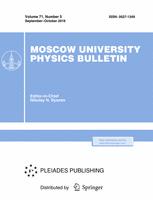Specific features of the behavior of the spectrum of steady states of the Dirac particle in a regularized “Coulomb” potential $V_\delta(z)={-}q/(|z|+\delta)$ as a function of the cutting parameter of $\delta$ in $1+1$ D are investigated. It is shown that in such a one-dimensional relativistic “hydrogen atom” at $\delta\ll1$, the discrete spectrum becomes a quasi-periodic function of $\delta$; this effect depends on the bonding constant analytically and has no nonrelativistic analog. This property of the Dirac spectral problem clearly demonstrates the presence of a physically containable energy spectrum at arbitrary small ${\delta>0}$ and simultaneously the absence of the regular limiting transition to $\delta\to0$. Thus, the necessity of extension of a definition for the Dirac Hamiltonian with irregularized potential in $1+1$ D is confirmed at all nonzero values of the bonding constant $q$. It is also noted that the three-dimensional Coulomb problem possesses a similar property at $q=Z\alpha>1$, i.e., when the selfconsistent extension is required for the Dirac Hamiltonian with an irregularized potential.
Faculty of Physics, Moscow State University, Moscow, 119991, Russia



